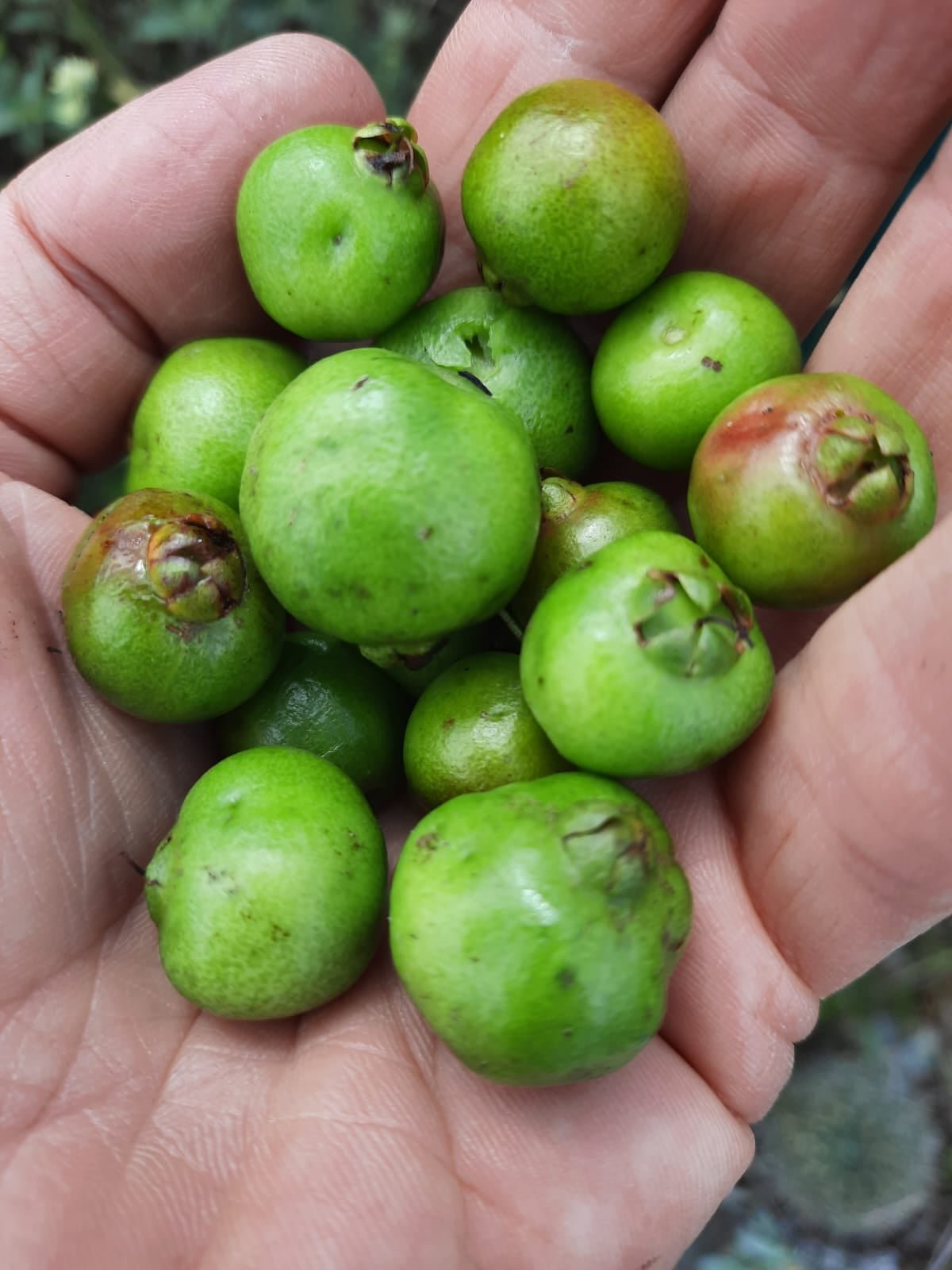Psidium Salutare
Seeds were imported from Argentina. This fruit, with its alluring name derived from indigenous Tupi Guarani, is characterized by its succulent berries, reminiscent of eyes, nestled within its persistent sepals. Thriving in various climates, from the cerrados to open fields, this slow-growing shrub adapts well to sandy, red, or yellowish soils, making it suitable for cultivation between 200 to 1,000 meters above sea level. Withstanding frost down to -6°C and enduring up to five months of drought, this resilient plant bears fruit from February to May, offering versatility in culinary applications. Planting is best done in well-drained, fertile soil, either directly in the ground or in pots, with a recommended spacing of 2 meters. Once established, minimal care is needed, with periodic weeding and organic fertilization sustaining its growth.
Seeds were imported from Argentina. This fruit, with its alluring name derived from indigenous Tupi Guarani, is characterized by its succulent berries, reminiscent of eyes, nestled within its persistent sepals. Thriving in various climates, from the cerrados to open fields, this slow-growing shrub adapts well to sandy, red, or yellowish soils, making it suitable for cultivation between 200 to 1,000 meters above sea level. Withstanding frost down to -6°C and enduring up to five months of drought, this resilient plant bears fruit from February to May, offering versatility in culinary applications. Planting is best done in well-drained, fertile soil, either directly in the ground or in pots, with a recommended spacing of 2 meters. Once established, minimal care is needed, with periodic weeding and organic fertilization sustaining its growth.
Seeds were imported from Argentina. This fruit, with its alluring name derived from indigenous Tupi Guarani, is characterized by its succulent berries, reminiscent of eyes, nestled within its persistent sepals. Thriving in various climates, from the cerrados to open fields, this slow-growing shrub adapts well to sandy, red, or yellowish soils, making it suitable for cultivation between 200 to 1,000 meters above sea level. Withstanding frost down to -6°C and enduring up to five months of drought, this resilient plant bears fruit from February to May, offering versatility in culinary applications. Planting is best done in well-drained, fertile soil, either directly in the ground or in pots, with a recommended spacing of 2 meters. Once established, minimal care is needed, with periodic weeding and organic fertilization sustaining its growth.



